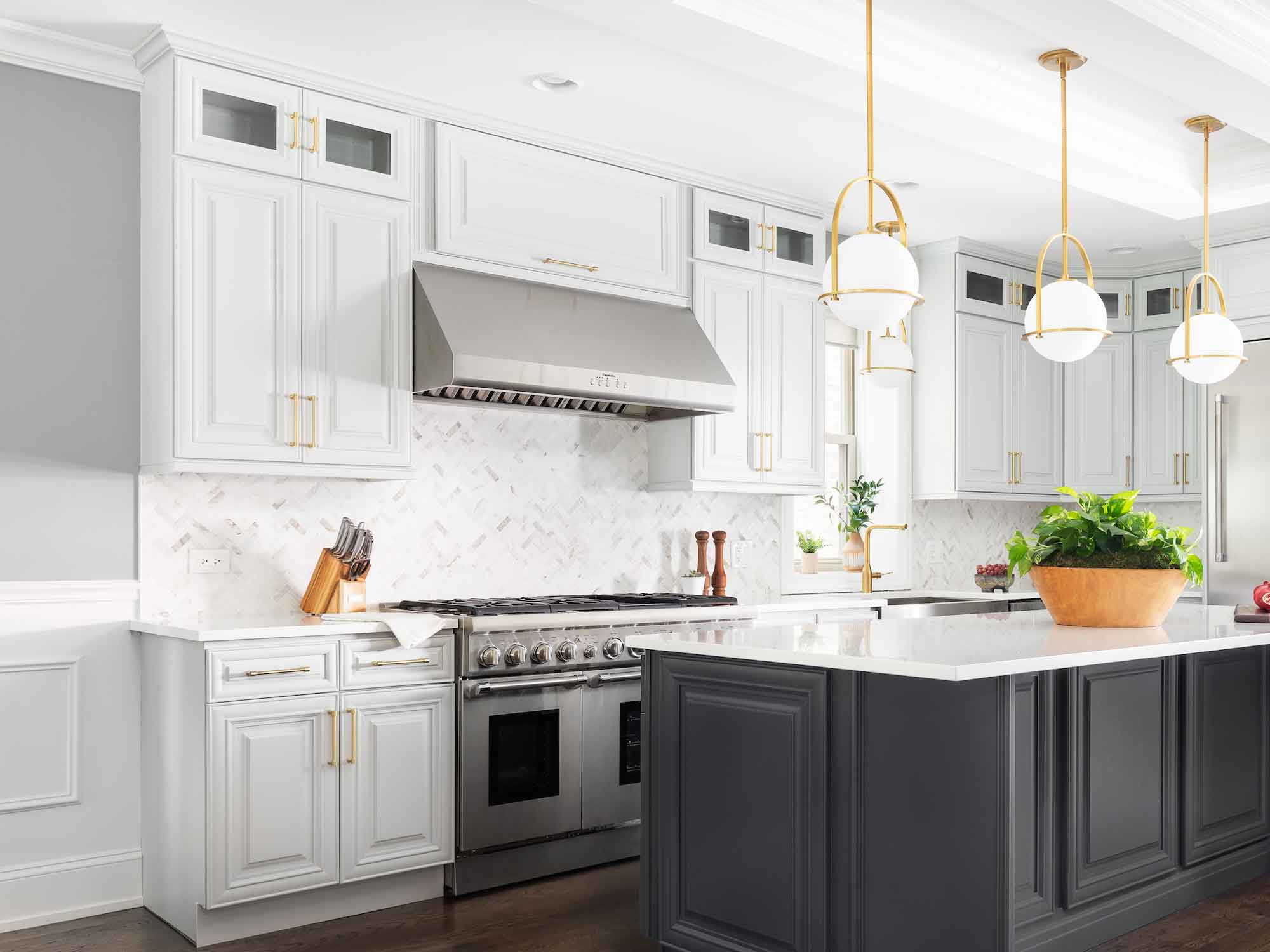Proper lighting in the kitchen is essential for creating a functional and safe space. The kitchen serves as a central hub for meal preparation, family gatherings, and social interactions. Adequate illumination is crucial for tasks such as food preparation, recipe reading, and safe cooking practices.
Beyond functionality, lighting Spunga significantly impacts the kitchen’s aesthetics, enhancing design elements, highlighting architectural features, and creating a warm ambiance. Regardless of kitchen size or layout, well-planned lighting can transform the space into a practical and stylish area that meets various needs. Kitchen lighting is not solely about functionality but also prioritizes safety.
Insufficient lighting can lead to accidents like cuts and burns during meal preparation. Task lighting is vital in food preparation and cooking areas to ensure clear visibility. Ambient lighting is equally important for creating a comfortable and inviting atmosphere, achievable through pendant lights, chandeliers, or recessed fixtures that provide overall illumination and set the desired mood.
A well-balanced combination of task and ambient lighting results in a kitchen that is both practical and visually appealing, enhancing both safety and aesthetics.
Types of Lighting to Consider
Task Lighting: Illuminating Work Areas
Task lighting is crucial for illuminating specific work areas such as countertops, stoves, and sinks. This type of lighting can be achieved through the use of under-cabinet lights, track lighting, or pendant lights strategically placed to provide focused illumination where it’s needed most.
Ambient Lighting: Creating a Warm Atmosphere
Ambient lighting provides overall illumination for the entire space and can be achieved through the use of ceiling-mounted fixtures such as chandeliers or recessed lights. This type of lighting helps to create a warm and inviting atmosphere in the kitchen.
Accent and Natural Lighting: Adding Visual Interest
In addition to task and ambient lighting, accent lighting can be used to highlight specific features or areas in the kitchen. This type of lighting can be achieved through the use of LED strip lights, recessed spotlights, or track lighting to draw attention to architectural details, artwork, or decorative elements. Furthermore, maximizing natural light is an important consideration when planning the lighting for your kitchen. By combining these different types of lighting, you can create a well-lit and visually appealing kitchen that meets your needs.
How to Choose the Right Fixtures
Choosing the right fixtures for your kitchen lighting is crucial for achieving the desired look and functionality. When selecting fixtures, it’s important to consider the size and layout of your kitchen, as well as your personal style preferences. For task lighting, under-cabinet lights are a popular choice as they provide focused illumination for countertops and work areas.
Pendant lights are also a versatile option for task lighting and can be used to add a decorative touch to the space. When it comes to ambient lighting, ceiling-mounted fixtures such as chandeliers or recessed lights are popular choices for providing overall illumination in the kitchen. In addition to considering the type of fixture, it’s also important to think about the style and finish that will complement your kitchen design.
Whether you prefer a modern, industrial, or traditional look, there are a wide variety of fixtures available to suit your style preferences. When choosing fixtures, it’s important to consider factors such as size, scale, and placement to ensure that they provide adequate illumination without overwhelming the space. By carefully selecting fixtures that complement your kitchen design and meet your lighting needs, you can create a well-lit and visually appealing space that enhances the functionality and aesthetic of your kitchen.
Tips for Maximizing Natural Light
Maximizing natural light in the kitchen is an effective way to reduce energy consumption and create a bright and airy atmosphere in the space. There are several strategies you can use to maximize natural light in your kitchen, starting with optimizing window placement. If possible, consider adding or enlarging windows to allow more natural light to enter the space.
Additionally, using sheer or light-colored window treatments can help to diffuse natural light while still providing privacy. Another way to maximize natural light is by using reflective surfaces such as mirrors or glass backsplashes to bounce light around the room and create a brighter environment. In addition to optimizing window placement and using reflective surfaces, choosing light-colored finishes for your kitchen cabinets, countertops, and walls can help to maximize natural light in the space.
Light colors reflect light more effectively than dark colors, making the room feel brighter and more spacious. Finally, keeping windows clean and free from obstructions such as overgrown foliage or heavy curtains can help to ensure that natural light can enter the space unimpeded. By implementing these strategies for maximizing natural light in your kitchen, you can create a bright and inviting space that feels open and airy.
Creating a Functional and Aesthetic Lighting Plan
Creating a functional and aesthetic lighting plan for your kitchen involves carefully considering the different types of lighting available and how they can be used together to meet your needs. Start by assessing the layout of your kitchen and identifying areas where task lighting is needed, such as over countertops, stoves, and sinks. Once you’ve identified these areas, consider which type of task lighting would work best for each location, whether it’s under-cabinet lights, track lighting, or pendant lights.
In addition to task lighting, think about how ambient lighting can be used to provide overall illumination for the space and create a warm and inviting atmosphere. When creating a lighting plan for your kitchen, it’s important to consider how different types of lighting will work together to achieve the desired look and functionality. For example, combining recessed lights with pendant lights can provide both task lighting and ambient lighting in the same area.
Similarly, using accent lighting to highlight specific features or areas in the kitchen can add visual interest and enhance the overall design of the space. By carefully considering how different types of lighting can be used together to create a well-lit and visually appealing kitchen, you can develop a functional and aesthetic lighting plan that meets your needs.
Common Mistakes to Avoid
Task Lighting: A Crucial Aspect
One common mistake is not considering the different types of lighting needed for specific tasks in the kitchen. Providing adequate task lighting for areas where food is prepared and cooked is vital to ensure clear visibility.
Creating a Balanced Look
Another mistake is not considering how different types of lighting will work together to create a well-lit and inviting space. By carefully planning how task, ambient, and accent lighting can be used together, you can achieve a balanced and visually appealing result.
Considering the Space and Natural Light
Other common mistakes include not taking into account the size and layout of your kitchen when selecting fixtures, and not considering natural light when planning the lighting. It’s essential to choose fixtures that are appropriately sized for the space and provide adequate illumination without overwhelming the room. Maximizing natural light not only reduces energy consumption but also helps to create a bright and airy atmosphere in the space.
By avoiding these common mistakes when planning the lighting for your kitchen, you can create a well-lit and visually appealing space that meets your needs.
DIY Lighting Projects for a Budget-Friendly Upgrade
If you’re looking to upgrade your kitchen lighting on a budget, there are several DIY projects that you can undertake to achieve a stylish and functional result. One budget-friendly option is to install under-cabinet lights to provide focused illumination for countertops and work areas. LED strip lights are an affordable option that can be easily installed with adhesive backing, providing an instant upgrade to your task lighting.
Another DIY project is to replace outdated fixtures with new ones that better suit your style preferences. Whether it’s swapping out old pendant lights for modern ones or updating ceiling-mounted fixtures with more contemporary options, replacing fixtures can make a big impact on the overall look of your kitchen. In addition to installing new fixtures, another budget-friendly DIY project is to add accent lighting to highlight specific features or areas in the kitchen.
LED strip lights or puck lights can be used to draw attention to architectural details, artwork, or decorative elements without breaking the bank. Finally, if you’re looking to maximize natural light in your kitchen on a budget, consider adding or enlarging windows if possible or using reflective surfaces such as mirrors or glass backsplashes to bounce light around the room. By undertaking these budget-friendly DIY projects, you can achieve a stylish and functional upgrade to your kitchen lighting without breaking the bank.
In conclusion, proper lighting in the kitchen is essential for creating a functional and inviting space that meets your needs. By carefully considering the different types of lighting available and how they can be used together, you can create a well-lit and visually appealing kitchen that enhances both the functionality and aesthetic of the space. Whether you’re looking to maximize natural light or undertake budget-friendly DIY projects, there are many strategies you can use to achieve stylish and functional results when planning the lighting for your kitchen.
By avoiding common mistakes and carefully planning your lighting design, you can create a well-lit and inviting kitchen that meets your needs while enhancing the overall design of your home.


